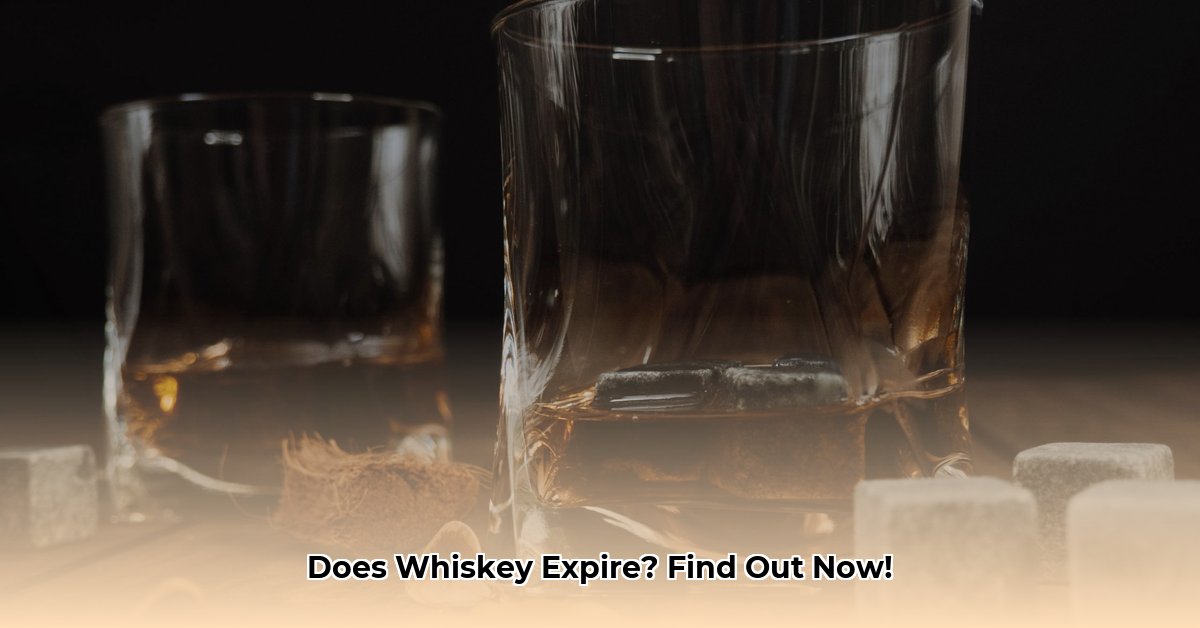So, you’ve unearthed a dusty bottle of whiskey from the back of your cabinet. Is it still good? The short answer is: probably. Unlike milk or bread, whiskey doesn’t spoil in the same way. It won’t grow mold or make you sick. Its high alcohol content acts as a natural preservative. But that doesn’t mean it’s entirely immune to the effects of time.
Shelf Life: Unopened vs. Opened
While an unopened bottle, stored correctly, can last for generations – a veritable flavor time capsule – an opened bottle is a different story. Once exposed to air, the whiskey begins to oxidize and evaporate, subtly altering its character.
| Bottle Status | Shelf Life |
|---|---|
| Unopened | Practically indefinite |
| Opened | 1-2 years (optimal quality: 6 months) |
The Enemies of Flavor: Air, Light, and Heat
The primary culprits behind flavor degradation are oxidation and evaporation. Oxidation, similar to a sliced apple browning, occurs when oxygen interacts with the whiskey. Light and heat accelerate this process. Evaporation concentrates the remaining whiskey, which can intensify existing flavors – not always a good thing.
Storing Whiskey Like a Pro: A Step-by-Step Guide
-
Location, Location, Location: Choose a cool, dark, and dry spot, away from direct sunlight and temperature fluctuations. A pantry, cupboard, or dedicated liquor cabinet is ideal. Think of it as creating a cozy, stable environment for your precious dram.
-
Stand Tall: Store bottles upright to minimize contact between the whiskey and the cork, preventing potential cork taint and leakage.
-
Seal the Deal: After each pour, ensure the bottle is tightly sealed. A quality bottle stopper can further minimize air exposure.
-
Downsize: For partially consumed bottles, consider transferring the remaining whiskey to a smaller container to reduce air space and slow oxidation.
Telltale Signs: When Whiskey Shows Its Age
While rare, whiskey can degrade to the point of being undrinkable. Look out for:
- Off-Putting Aromas: Musty, sour, or otherwise unpleasant smells.
- Flavor Changes: Metallic, sour, or drastically altered tastes.
- Visual Clues: Cloudiness, sediment (though some sediment can be normal in very old whiskeys), or discoloration.
- Mold: If you see any mold, discard the bottle immediately.
Whiskey vs. Whisky: A Quick Primer
“Whiskey” generally refers to American and Irish varieties, while “whisky” is typically used for Scotch, Canadian, and Japanese whiskies. A minor distinction, but one worth noting.
FAQs: Addressing Your Whiskey Queries
- Flask Storage: Fine for short periods, but not ideal for long-term storage due to potential metallic flavors.
- Temperature Fluctuations: Avoid them. Consistent temperatures are key for preserving flavor.
- Freezing Whiskey: Freezing can dull flavors. Consider chilling your whiskey.
- Salvaging Dull Whiskey: A few drops of water can sometimes “open up” the whiskey and reveal hidden flavors. If significantly oxidized, consider using it in cocktails or cooking.
- Can old whiskey become cloudy? Yes, temperature changes can sometimes cause cloudiness in very old whiskey. If the cloudiness disappears when the whiskey returns to room temperature, it’s generally nothing to worry about.
The Science of Oxidation: A Simplified Explanation
Oxidation involves chemical reactions between the whiskey and oxygen, altering its chemical makeup and, consequently, its flavor profile. Much like rust forming on metal, it’s a gradual but inevitable process.
Bonus Tip: Invest in a Vacuum Sealer
For long-term storage of opened bottles, consider using a vacuum sealer. These devices remove air from the bottle, significantly slowing oxidation.
A Note on Ongoing Research
Our understanding of whiskey maturation and degradation continues to evolve. Current research suggests that some extremely old whiskeys might experience “whiskey fatigue,” a subtle fading of character. This area of study is still developing, and future discoveries may further refine our understanding of how whiskey ages and how best to preserve it.
Conclusion: Savoring Every Sip
Proper whiskey storage ensures that each dram is an enjoyable experience. By following these guidelines, you’re not just preserving a spirit, but safeguarding a piece of liquid history. Enjoy responsibly!
- Doctor Work Life Balance: Proven Strategies for Physician Well-being - November 20, 2025
- Find Your Work-Life Harmony: Quotes for a Fulfilling Life - November 18, 2025
- CRNA Work-Life Balance: Strategies for a Healthier Lifestyle - November 16, 2025
















